Ask Ethan: how many of the stars visible in the sky actually exist?
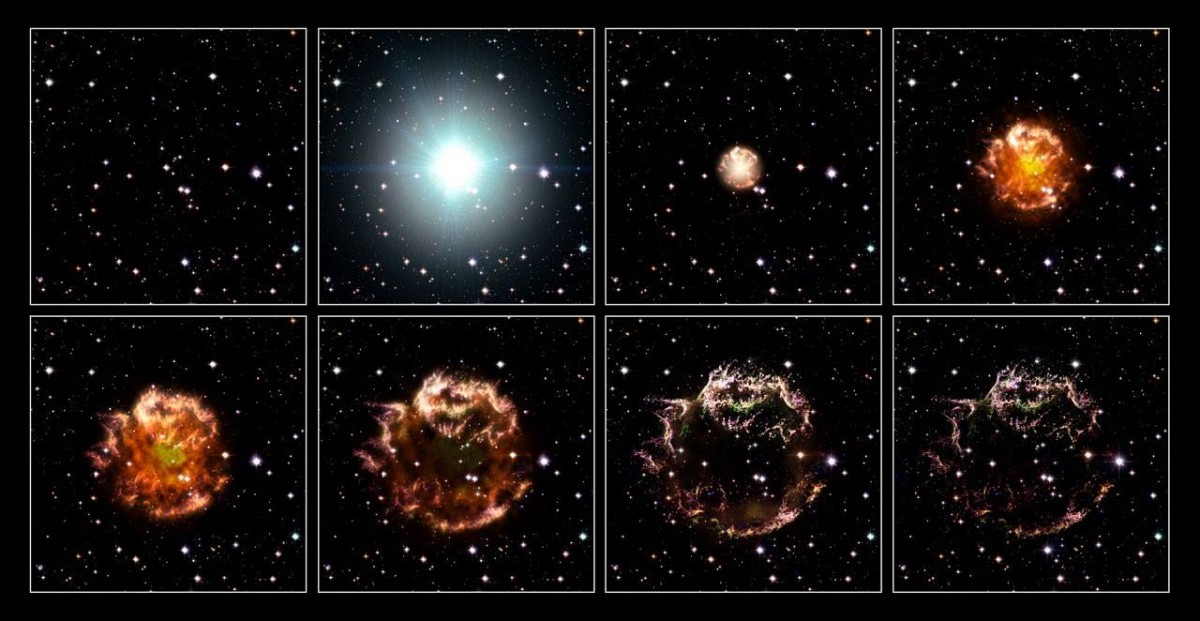
Animation of a supernova that exploded in the 17th century in the constellation Cassiopeia
Looking at the Universe, we take for granted that what we see actually exists right now. But in fact it is not so. When communicating with the Apollo missions astronauts, there were delays, since the light needed a little more than two seconds to reach them and back. Rovers on Mars are forced to act independently, since delays of a few minutes are too long for people to manually change the direction of their movement. And if you go beyond the solar system, the distances to the stars will be measured in light years, which means that when we see a distant object, we look into the past. And how do we know that what we see coincides with what is there? One reader wants to know:
How many of the stars we observe from Earth really exist? Since the light from many of them passed to us hundreds, thousands and even millions of light years, is it not possible that many of the stars we saw had already burned out or exploded hundreds or thousands of years ago, and the light of these events (or its absence) is simply not managed to reach us?
The answer depends very much on how far you are ready to look.
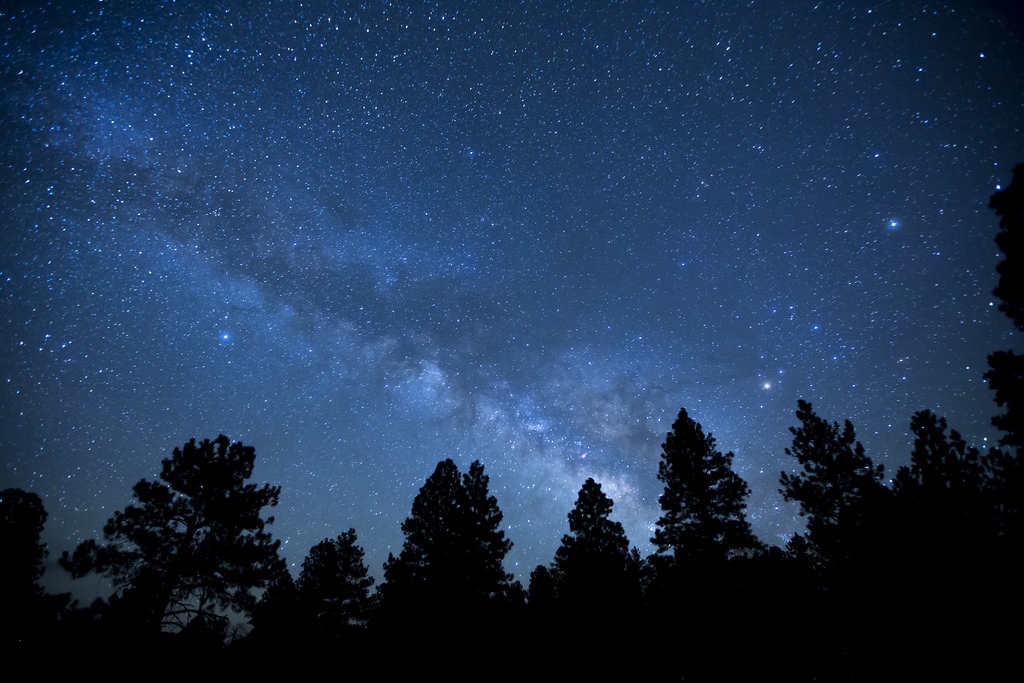
Such a Californian sky, which in ideal conditions can be seen with the naked eye
With the naked eye in ideal conditions - total darkness, no light pollution, clouds, the moon, a full view of the whole sky - a person is able to view a little more than 9000 stars. All these stars are in our galaxy, so none of them is located millions of light years from us. But some are hundreds of light years away. Deneb, one of the brightest stars in the sky (and the top of the Summer Triangle) is 2600 light years away, and the most distant star distinguished by the eye - V762 Cas - is 16,000 light years away.
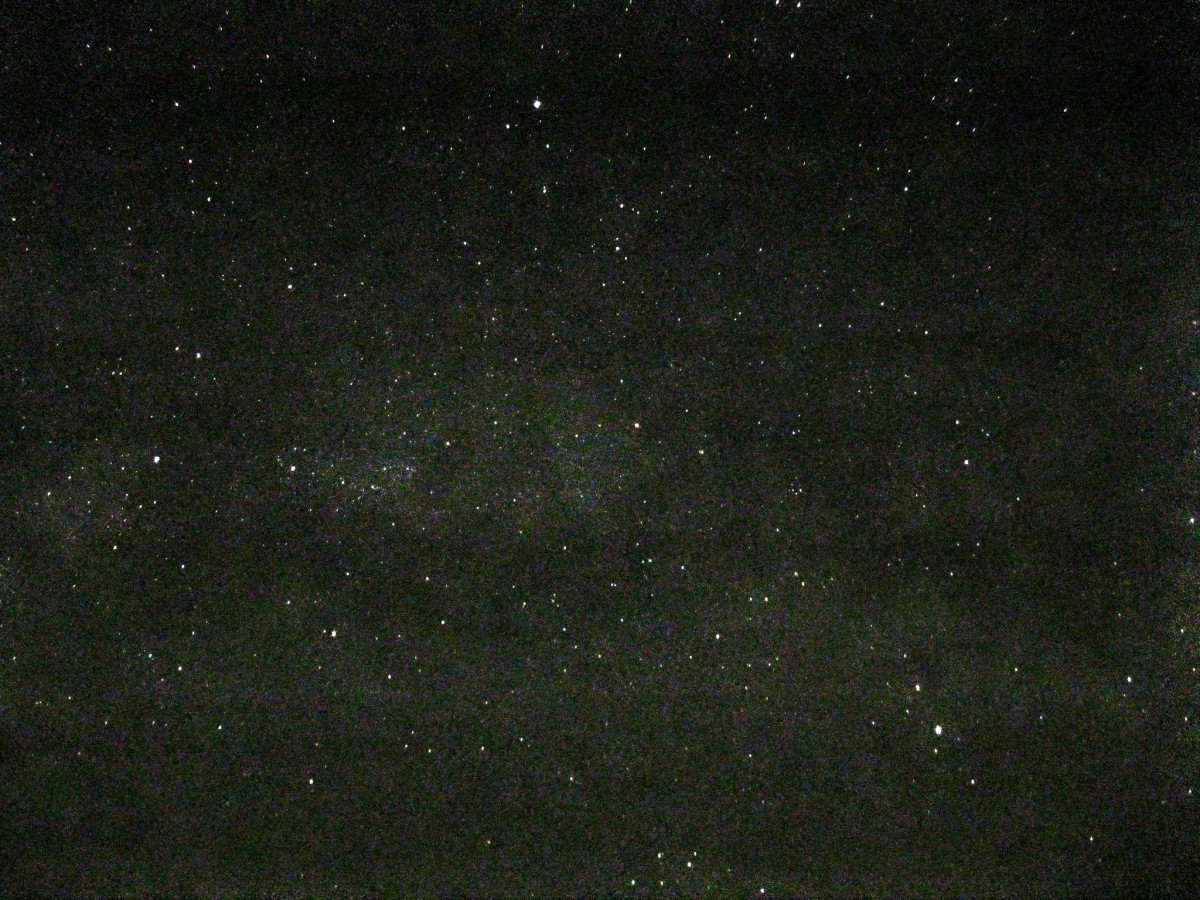
Summer triangle, Deneb visible on the left side
But most visible stars are just a few hundred light years away, or even less. And although the death of stars seems sudden to us, in fact, the life cycle of stars is such that the star on its way to dying goes through several important phases. Specifically, the star:
• should increase to a red giant and start burning helium,
• must burn helium in the nucleus and start carbon synthesis,
• burn carbon and start the synthesis of oxygen and heavier elements, until iron, nickel and cobalt are produced from silicon,
• and only when the fuel for synthesis ends up in the core, the core is sharply compressed and a supernova explosion occurs.
Only a small part of the stars - of the order of one of several hundred - are massive enough to die suddenly. The rest shed their outer layers and shrink to a white dwarf for tens of thousands of years.
But massive stars are disproportionately bright, so it is likely that we will see them! And although the eye can see only about 9000 stars, dozens of stars can qualify for the next supernova in our galaxy. Looking at a single star, it is very difficult to understand at what stage of life it is, and how soon it will become a supernova. A star such as Eta Carina or Betelgeuse could already explode and end her life - or she can continue to shine for hundreds and thousands of years, burning fuel. There is no “she is jerking” type signal, and in the case of This Kiel, the recent release (mass release of a huge amount of substance) in the 19th century could have delayed its explosion in the form of a supernova for a time longer than a segment of human existence.
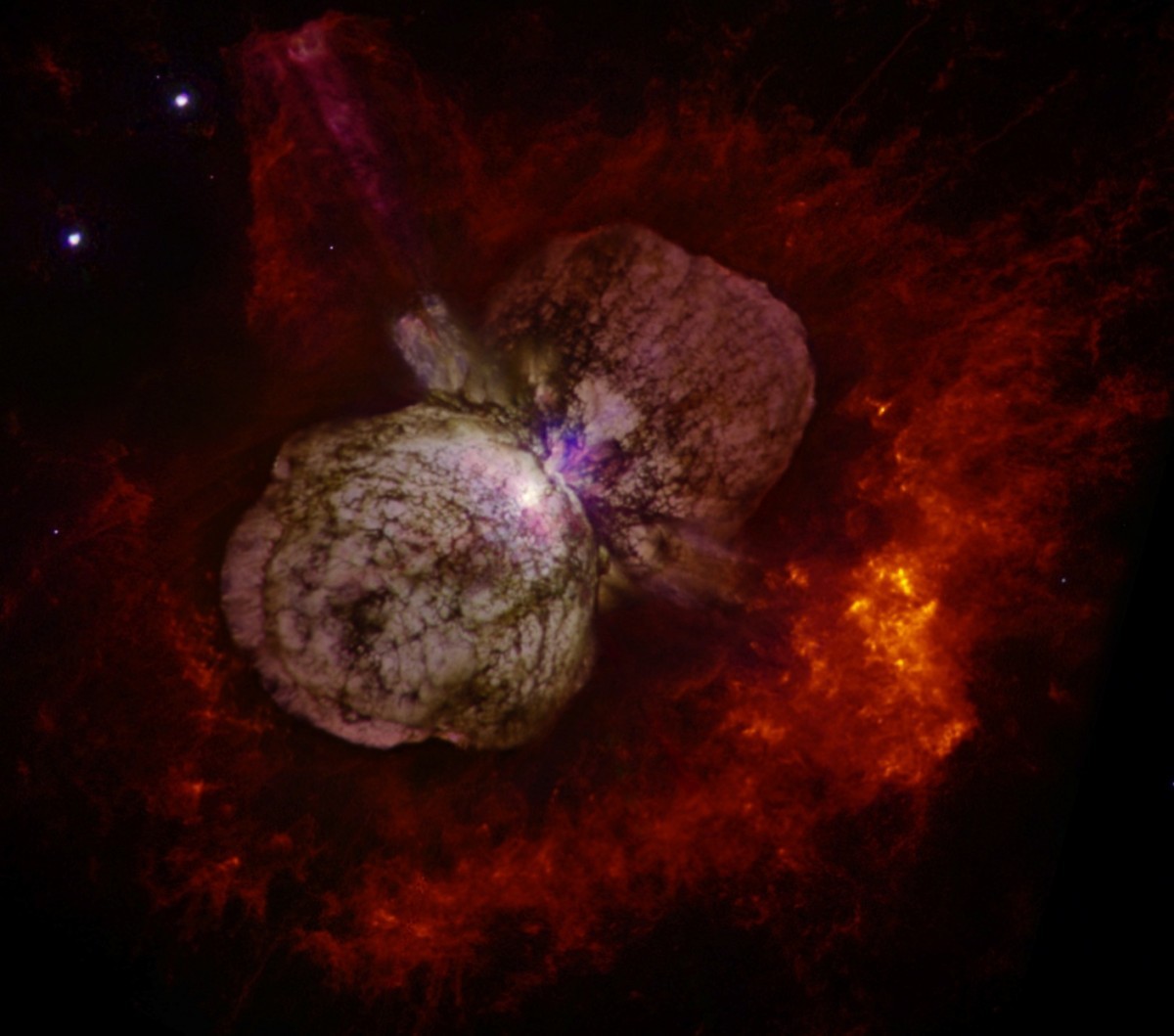
The homunculus nebula surrounding the giant star Eta Carina, located 7000 light years from us in our Milky Way
On average, a star destined to become a supernova remains in such an indefinite, gigantic phase of life, from one to ten million years. Although there are many theories about the signs that precede the transformation of a star into a supernova, in fact, the last supernova observed by us in our galaxy exploded more than 4,000 years ago, the newest of the open remains were discovered more than 100 years ago, and about the star that exploded 1987 in the satellite galaxy, very little is known. It was the closest supernova explosion observed by mankind since 1604.

1987n supernova remnant located in the Large Magellanic Cloud, 165,000 light-years from us
Considering that a typical supernova candidate visible to the naked eye, on average, is located about 4,000 light years away, and there are about 25 such stars all over the sky, there is a chance from 1% to 10%, which is one of us visible the stars are gone. Not such a big chance.
What about the reverse process? What about emerging stars? It seems to us that there is some magical moment in which something just begins to carry out the synthesis of protons in the nucleus and "turns on", becoming a star. In fact, star formation — from a protostar to a real, genuine star from the main sequence — takes tens of millions of years.
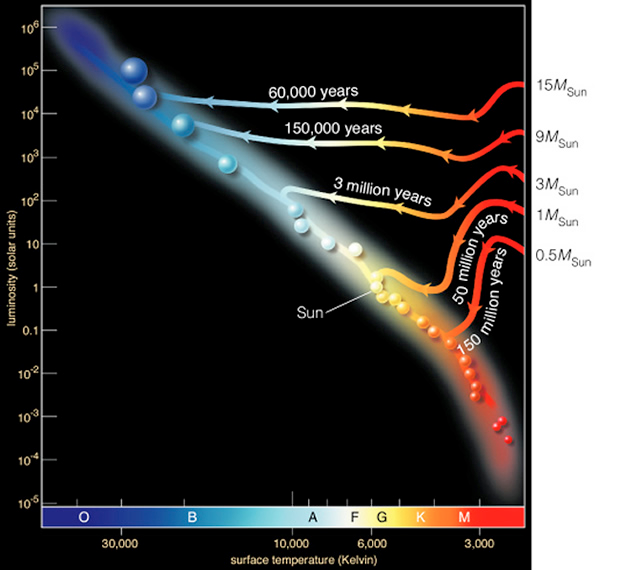
The time it takes a protostar to become a real star depends heavily on its mass.
We will not see protostar with the naked eye, as they form inside nebulae: in places like the Orion Nebula or the Eagle Nebula. These gigantic complexes of molecular clouds experience a gravitational collapse, and generate thousands of new stars that have formed over a period of millions and tens of millions of years. After the gas evaporates inside, stars finally become visible, many of which become distinguishable by the eye.
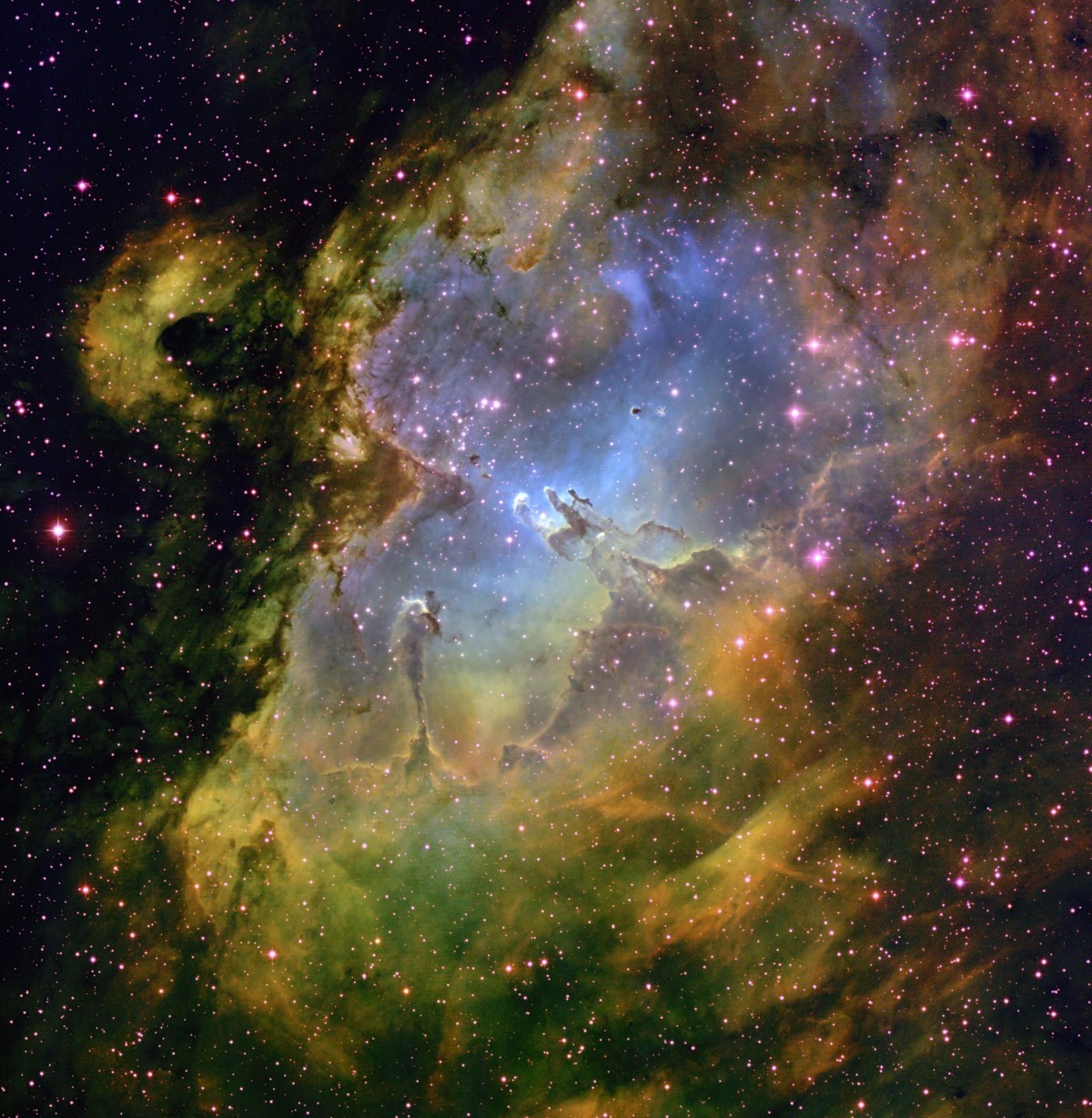
Eagle Nebula. In the center you can see the "Pillars of creation"
But these stars do not appear suddenly and do not become visible immediately after the end of their formation. We can only hope for a supernova explosion that finds itself in a place where we have not seen stars before. The best approximation for the assessment of such an event will be what we have observed throughout our history - this happens every few centuries.

Tycho Brahe points to the supernova of 1572
If we want to take binoculars, we will move from 9,000 stars to 200,000. A small three-inch telescope will raise this number to 5 million. A good amateur telescope with a diameter of 15 "will allow us to see approximately 380 million stars in our galaxy, which will greatly increase our chances. But even if we take all 200-400 billion stars in our galaxy, the average distance to which will be about 40,000 light years, then the dead of them will be on the order of several hundred thousand - one in a million - and they will be located on the far side of the galaxy.
Because the stars are so far away, our eyes are too weak, and their light moves too fast for them to die while the light is still in transit. This is possible, but the chances are very small.
All Articles